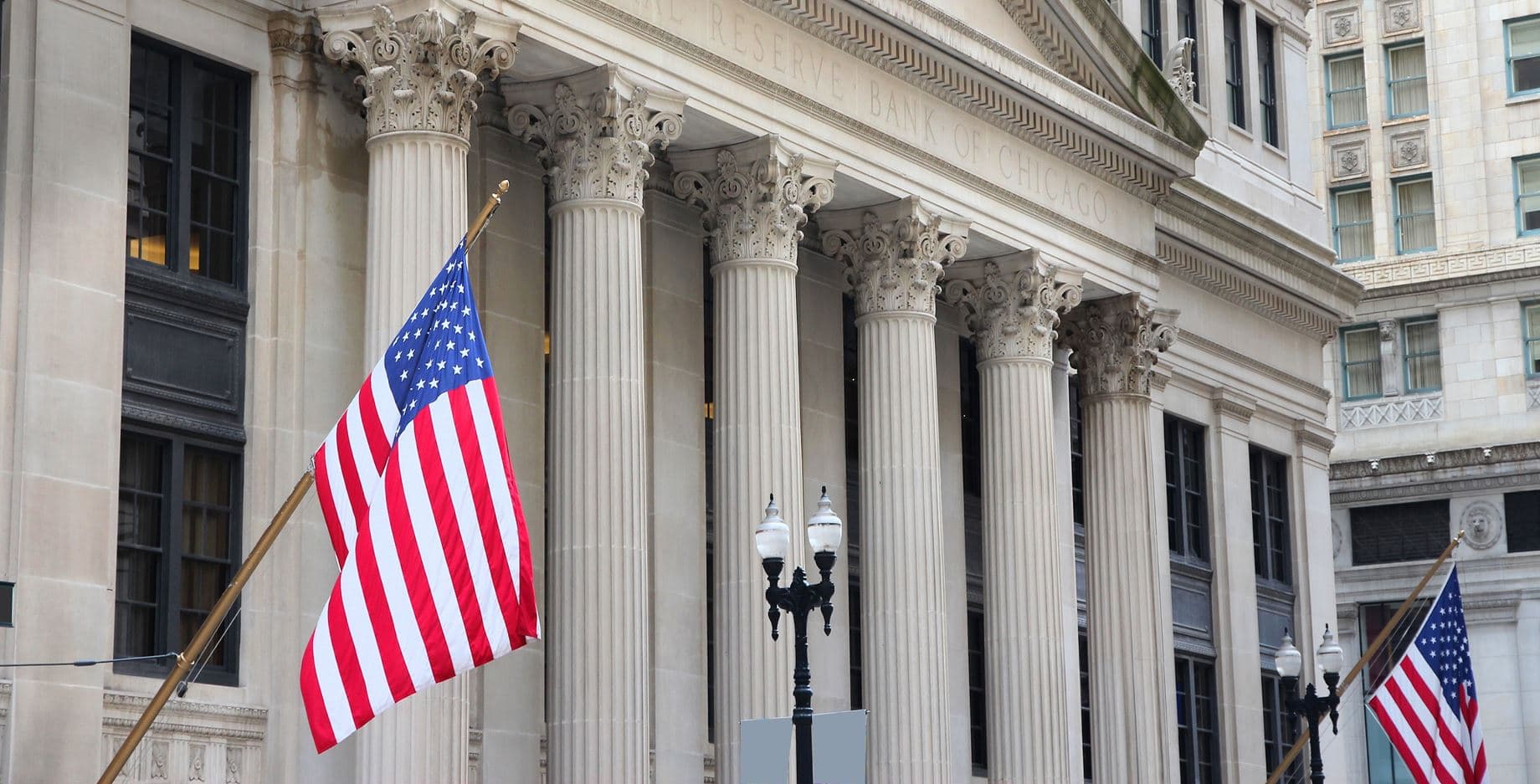Will the Fed’s interest rate cut boost US commercial real estate?
Today's Fed interest rate cut marks the start of the central bank’s policy shift from restrictive to accommodative – but will it have an impact on US commercial real estate?

Key highlights
Leading up to today’s Federal interest rate announcement, the question wasn’t whether or not the Federal Reserve would decide to cut rates; but rather, by how much
Today’s milestone 50 bps rate reduction is surely a welcome relief to the market following months of hopeful cut expectations that didn’t come to fruition
More importantly, today marks the start of the central bank’s policy shift from restrictive to accommodative
While tremendous progress has been made in bringing inflation down since it reached its peak in the summer of 2022, the most recent inflation data have shown more mixed signals and a general slowing pace of disinflation
Investors are still pricing in at least two additional cuts at the next Federal interest rate announcements in November and December
Rate cuts, at least at the beginning of an easing cycle, bear more of a psychological impact than a tangible one across the US commercial real estate market
If the Federal Reserve lowers interest rates by at least 25 basis points at each of the remaining policy meetings in 2024, as expected, we may see more movement across the US commercial real estate market at the start of 2025
Fed announces 50 basis point cut to US interest rates
Leading up to today’s Federal interest rate announcement, the question wasn’t whether or not the Federal Reserve would decide to cut rates; but rather, by how much. A month prior to today’s policy meeting, investor expectations for a 25 or 50 basis points (bps) cut were split 50/50. Over the following weeks, financial markets placed the probability of a 50 bps cut at around 30%, with the odds of a 25 bps cut much higher at around 70%, with expectations that Fed rate cuts would start slow. However, heading into the week of the announcement, these market priced probabilities swung again to favor a larger first cut.
Conflicting expectations for the pace of this long-awaited easing cycle can largely be attributed to mixed economic signals and ongoing fears of an impending recession. To keep monetary policy too tight with higher rates could stifle economic activity; however, a larger 50 bps first cut could be interpreted as the central bank acknowledging that the economy is weakening.
Today’s milestone 50 bps cut to the federal funds rate (which has been held in the 5.25%-5.50% range since July 2023) is surely a welcome relief to the market following months of hopeful cut expectations that didn’t come to fruition. The decision also aligns with the Federal Open Market Committee’s (FOMC) mandate to bring down inflation while subsequently protecting the US economy and maximizing employment. More importantly, this marks the start of the central bank’s policy shift from restrictive to accommodative.
Inflation progress dampened by mixed signals
At the Fed’s July meeting, Federal Reserve Chair Jeremy Powell reiterated the importance of continued inflation control measures, noting that while progress had been made, it wasn’t yet enough to warrant a rate cut. Looking ahead, he noted that a rate cut “could be on the table” at the next meeting, and with the release of August inflation data, that cut seemed inevitable.
The consumer price index for August rose 0.2% month-over-month and 2.5% year-over-year (down from 2.9% in July), indicating that US inflation has cooled to its lowest point in 3 years. Grocery prices remained unchanged from July to August and the cost of petrol dropped, while the cost of airline tickets, car insurance, rent, and other housing costs grew more expensive.
August employment data, however, offered some mixed signals, with employment increasing less than expected in August, and job openings dropping to a 3-1/2-year low in July. Conversely, the unemployment rate decreased to 4.2%, the Bureau of Labor Statistics reported that productivity is on the rise, and average hourly earnings are forecast to have increased 0.3% in August after gaining 0.2% in July. Producer prices also rose slightly more than expected in August amid a rebound in the cost of services.
“While tremendous progress has been made in bringing inflation down since it reached its peak in the summer of 2022, the most recent inflation data have shown more mixed signals and a general slowing pace of disinflation,” notes Omar Eltorai, Research Director at Altus Group. “This complicates the expected path forward for interest rate cuts.”
Taking a closer look at the US consumer, some concerning trends emerge. According to reports from Citigroup Inc., consumers are shifting their spending away from discretionary goods to focus on necessities – a trend that typically materializes during recessionary periods. An uptick in credit losses has also been observed as delinquencies rise.
“The average interest rate for new credit cards in July was 21.5%” adds Cole Perry, Associate Director of Research at Altus Group. “There was a huge run-up in rates heading into 2022, and this can become troubling when consumers start to use credit to purchase necessities. The cost of borrowing combined with inflation is still running hot, even though we’ve made progress in cooling it – and the impact of this will take time to play out.”
Nonetheless, investors are still pricing in at least two additional cuts at the next Federal interest rate announcements in November and December. “Absent any shock to either capital markets or the economy, I’d anticipate that the Fed will aim to take a similar, gradual, and measured approach to cutting as they did to hiking,” shares Eltorai. “Of course, these decisions will remain dependent on the inflation data showing continued progress towards the Fed’s 2% target and labor market data showing resiliency.”
What impact do Fed rate cuts have on the commercial real estate in the US?
Although today’s Federal interest rate announcement is welcome news to consumers and investors alike, it’s important to note that the reduction in financing costs is unlikely to be felt evenly and widely across the economy. Rate cuts, at least at the beginning of an easing cycle, bear more of a psychological impact than a tangible one across the US commercial real estate market.
“The Fed Funds Rate is not the rate at which businesses, investors, or consumers borrow or access financing, so these effects will take time to flow through,” notes Eltorai. “However, the signal sent by the first cut may be beneficial in the near-term, as this shift in policy stance can be factored into business projections, expectations, and valuations. Much of this is already visible in the stock market where rate-sensitive sectors and companies have generally benefited from the anticipated start to the cuts already.”
While CRE transaction activity has remained muted in the face of high borrowing costs and in anticipation of impending interest rate cuts, today’s decision should translate to an uptick in sentiment across investors waiting on the sidelines, who may be readying themselves to re-enter the fold.
“Ultimately, any reduction in the cost of borrowing will help the CRE transaction market and CRE valuations,” notes Eltorai. “Although a 50 bps cut to the Fed Funds Rate is unlikely to spur significant and sustainable excitement in CRE, every basis point counts.”
If the Federal Reserve lowers interest rates by at least 25 basis points at each of the remaining policy meetings in 2024, as expected, we may see more movement across the US commercial real estate market at the start of 2025. “More important for CRE is what happens with the yields on US Treasury Securities,” adds Eltorai. “And as for the US economy – at the moment, it appears that a soft landing is possible. However, the answer to this question will only become clearer over the coming quarters.”
Want to be notified of our new and relevant CRE content, articles and events?
Author

Lauren Ramesbottom
Senior Copywriter
Author

Lauren Ramesbottom
Senior Copywriter
Resources
Latest insights






